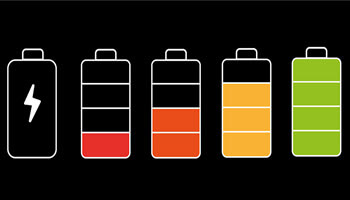How should you recharge your batteries in your laptop? The most popular information online always suggests 100% until it drops to about 20%. This article suggests otherwise.
Why Charging Your Gadgets Over 80 Is Such A Bad Idea
Also: How To Make Android Battery Last Much Longer
Anything over 80% could shorten the lifespan of your battery. It recommends you never charge over 80% because of a process called “Lithium Plating” which can shorten the overall lifespan of the battery.
A quote from:
Guide To Lithium Plating In Lithium-ion-Batteries
Lithium plating is metallic lithium deposits on the anode surface that have not inserted themselves into the anode material via intercalation. In lithium-ion batteries (LIB) lithium plating is long known to have a detrimental effect on battery lifetime and safety.
This is what shortens the lifespan of a battery over time and can lead to an issue known as “thermal runaway”. It’s rare but these batteries can swell up, break, and burst into flames. When they start swelling, this is where the term “Spicy Pillows” comes into play.
According to this report, here is how to put out a lithium battery fire:
How Do You Put Out Lithium-ion Battery Fire
Lithium-ion batteries are considered a Class B fire, so a standard ABC or dry chemical fire extinguisher should be used. Class B is the classification given to flammable liquids. Lithium-ion batteries contain liquid electrolytes that provide a conductive pathway, so the batteries receive a Class B fire classification.
Do not use water to put out a lithium fire. As I understand it, correct me if I’m wrong, the lithium interacts with the water, separating the hydrogen, and creating hydrogen gas that keeps the fire going. In other words, water makes it burn more. Like we have our own modern-day version of Greek Fire.
They also have a list of some recommendations for a safer experience with lithium-ion batteries.
Always follow local, state, and federal regulations on proper battery disposal
Adhere to manufacturer guidelines when extinguishing small battery fires
Only use the battery that is designed for the device
Only use the charging cord that came with the device
Keep batteries in their original packaging
Keep batteries at room temperature
Avoid placing batteries in direct sunlight or in hot vehicles
Store batteries in dry areas with adequate ventilation
Store devices and batteries in a fire-resistant container
Remove batteries from their charger when fully charged
Do not charge a device under pillows or on a couch
Purchase and use devices that are listed by a qualified testing laboratory
Replacement batteries and chargers should match and come from the original manufacturer or an authorized reseller
Avoid non-uniform stacking of boxes containing batteries as it can lead to tipping
Inspect for damage and batteries before use. If defects are found, do not use and place them away from flammable materials
Immediately remove a device if a battery feels hot or shows damage
I have some old laptop batteries lying around that I’m almost afraid to keep now since I discovered the prospect of these fires. Well, as long as they are not damaged or swelling. So, what’s your opinion? How do you charge up your batteries? Are you concerned about fires? Let us know in the comments.
Further reading:
iPad Air Explodes In Public Thankfully No One Hurt
—

How low should a laptop battery be allowed to go before recharging? I let mine go to 5%.
20% seems to be the most recommended answer online.